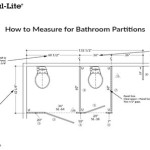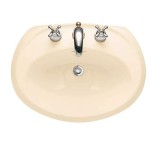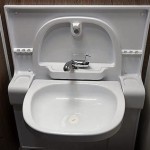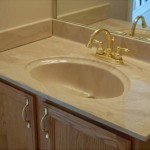How To Treat Black Mould On Bathroom Ceiling
Black mould, often identified by its dark greenish-black appearance, is a common problem in bathrooms due to the consistent presence of moisture. Its presence can be more than just unsightly; it can pose health risks, particularly for individuals with respiratory conditions or weakened immune systems. Addressing this issue promptly and effectively is crucial for maintaining a healthy and safe bathroom environment.
Identifying black mould is the first step. While it typically appears black or dark green, it can sometimes appear greyish. Look for discoloration and a characteristic musty odor. Common locations include the ceiling, especially around vents and light fixtures, and areas surrounding the shower or bathtub where condensation accumulates.
Before commencing any mould removal process, safety precautions are essential. Protective gear, including gloves, safety goggles, and a mask rated for mould spores (N95 respirator or higher), should be worn. Proper ventilation is also crucial. Open a window or use a fan to circulate fresh air and prevent the inhalation of mould spores.
Several cleaning solutions are effective against black mould. A diluted bleach solution, typically one part bleach to ten parts water, is a common choice. However, bleach can damage certain surfaces, so always test in an inconspicuous area first. White vinegar is a gentler alternative and is effective against many types of mould. Baking soda, mixed with water to form a paste, is another option and is particularly useful for scrubbing affected areas.
Commercial mould removal products are available and often formulated to be more potent than household solutions. Always follow the manufacturer's instructions carefully when using these products. Some commercial products may contain harsh chemicals, so ensure adequate ventilation during application.
The cleaning process involves applying the chosen cleaning solution to the affected area. A spray bottle is useful for applying liquid solutions, while a paste can be spread with a cloth or brush. Allow the solution to sit on the mould for a period, usually between 10 and 20 minutes, to penetrate and kill the spores.
After the dwell time, scrub the affected area with a brush, sponge, or cloth. For stubborn mould, a stiff-bristled brush may be necessary. Rinse the area thoroughly with clean water to remove any residual cleaning solution and mould debris. Dry the area completely with a clean towel or allow it to air dry. A fan can expedite the drying process.
Preventing future mould growth requires addressing the underlying moisture issues. Ensure adequate ventilation by running the bathroom fan during and after showers or baths. Fix any leaks in plumbing or roofing promptly. Use a dehumidifier to reduce humidity levels in the bathroom, especially during humid seasons. Wiping down surfaces after showering can also help prevent condensation from accumulating.
For larger infestations or recurring mould problems, consulting a professional mould remediation service is recommended. These services have the expertise and specialized equipment to handle extensive mould growth safely and effectively. They can also identify hidden mould and address underlying structural issues contributing to the problem.
Regular cleaning and maintenance are essential for preventing mould growth. Routinely cleaning the bathroom with appropriate cleaning solutions can help inhibit mould development. Pay particular attention to areas prone to moisture, such as the shower, bathtub, and ceiling. Regular inspections for signs of mould can help detect and address the issue early, preventing it from becoming a larger problem.
Addressing mould growth proactively is crucial for maintaining a healthy bathroom environment. By understanding the causes of mould growth, utilizing appropriate cleaning methods, and implementing preventative measures, homeowners can effectively control and mitigate the presence of black mould on their bathroom ceilings and other areas susceptible to moisture.
While cleaning solutions can effectively remove visible mould, porous materials like drywall or ceiling tiles may require replacement if significantly affected. Mould can penetrate deep into these materials, making complete removal difficult. Replacing affected materials ensures the complete eradication of the mould and prevents future regrowth.
Maintaining consistent airflow in the bathroom is paramount in preventing recurring mould issues. In addition to using the bathroom fan, consider leaving the bathroom door slightly ajar after showering to allow for further air circulation. This can help reduce humidity and discourage mould growth.
Addressing any leaks promptly is crucial, as even minor leaks can contribute significantly to moisture buildup. Inspect pipes, faucets, and showerheads regularly for signs of leaks and repair them as soon as possible. Check the caulking around the bathtub and shower for any cracks or gaps and reseal as needed to prevent water seepage.

How To Remove Black Mold From A Bathroom Ceiling

Ceiling Mold Growth Learn The Cause And How To Prevent It Environix

Cleaning Mold From Bathroom Ceilings Like A Pro Lovetoknow

Cleaning Mrs Hinch Fans Share Tips To Remove Ceiling Mould Express Co

Black Mould Removal The Right Way

Bathroom Ceiling Mold Removal When To Clean Call Branch Environmental

Don T Let Mould Take Over How To Remove It From Your Ceiling

Mold On Bathroom Ceiling How To Clean Off

What Is The Best Way To Remove Mold From Bathroom Ceiling

How To Get Rid Of Mold On Your Bathroom Ceiling Aqa
Related Posts







